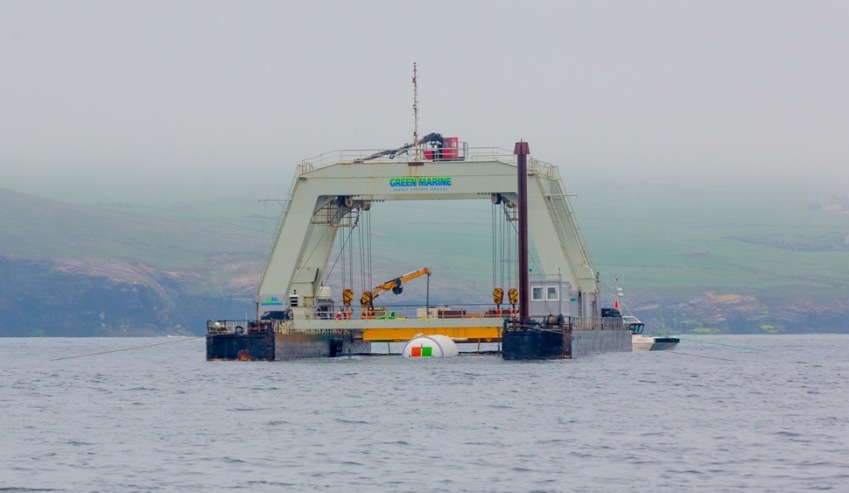Submarine designer Naval Group, in partnership with Microsoft, have deployed an experimental, shipping-container-size prototype data centre that is processing workloads on the seafloor near Scotland’s Orkney Islands.
To continue reading the rest of this article, please log in.
Create free account to get unlimited news articles and more!
Known as Project Natick, the underwater data centre will be operated “lights-out” for a period of one year.
The deployment of the Northern Isles data centre at the European Marine Energy Centre marks a milestone for the project, a years-long research effort to investigate manufacturing and operating environmentally sustainable, prepackaged datacentre units that can be ordered to size, rapidly deployed and left to operate lights out on the seafloor for years.
Naval Group and its subsidiary Naval Energies have adapted their technologies to the design of the Natick Phase 2 data centre structure.
Éric Papin, Naval Group director of innovation and technological expertise, said the project is a bold endeavour.
"We are proud to bring Naval Group’s expertise on design, implementation, deployment and maintenance of innovative projects in maritime environments to the service of Microsoft. Naval Group has always invested in research and development, most recently in Marine Renewable Energies. We are pleased to participate in Microsoft’s vision for a clean energy future," Papin said.
Naval Group is supporting Microsoft towards its objective to build, deploy and operate an underwater data centre that is as powerful as several thousand high end consumer PCs with enough storage for about 5 million movies.
The data centre is contained in a submersible cylindrical system inspired by the underwater constructions of Naval Group. A triangular base (also called Subsea Docking Structure), ensures the positioning of the data centre at the bottom of the ocean. A dual air-water system enables cooling of the data centre, thus taking advantage of the temperature of the underwater environment.
The European Marine Energy Centre test base offers a favorable environment for the deployment of Phase 2 of the Natick Project, which is powered by marine renewable energy sources.
The underwater data centre is designed to remain immersed for five years without direct intervention and will be operated “lights-out” for a year to evaluate its performance in real use conditions.
Ben Cutler, Project Natick manager at Microsoft Research, said Phase 2 of the project is part of Microsoft's endeavour to produce innovative data centre solutions.
"Microsoft is pleased to collaborate with Naval Group on Phase 2 of Project Natick. Project Natick reflects Microsoft’s ongoing quest for cloud data centre solutions that offer less resource intensive options, rapid provisioning, lower costs and high agility in meeting customer needs," Cutler said.
"A key advantage is getting closer to our customers: half the world’s population lives within 200 kilometres of the sea, so placing data centres offshore increases the proximity of the cloud to the population, reducing latency and providing better responsiveness. And by deploying in the water we benefit from ready access to cooling – reducing the requirement for energy for cooling by up to 95 per cent."

 Login
Login







